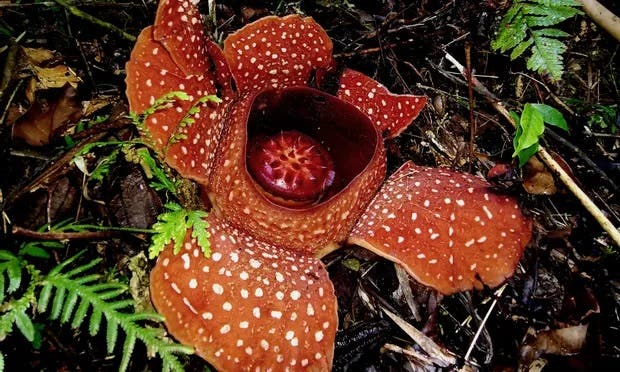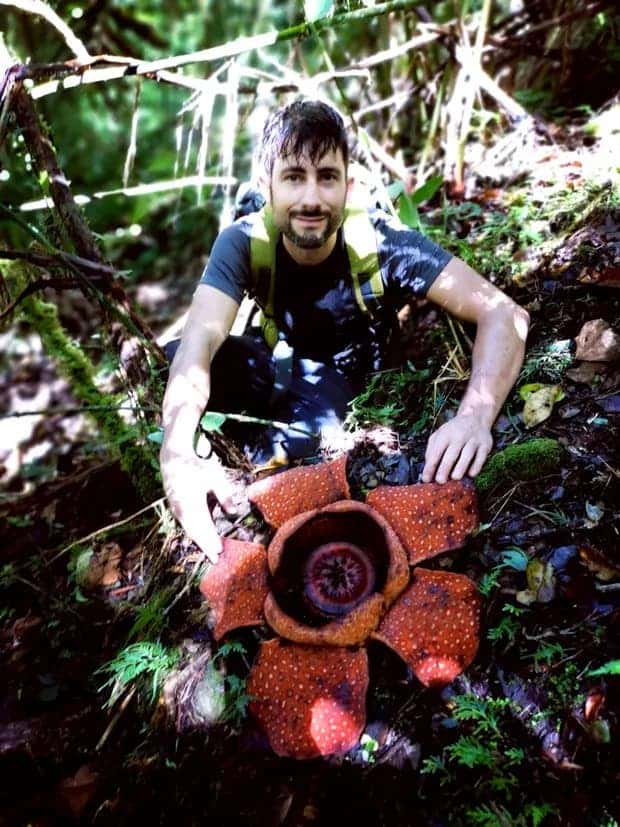Deep in the bowels of the Luzon rainforest in the Philippines lies the extraordinary Rafflesia banaoana, a giant alien-looking plant more than half a meter across with fleshy red petals covered in white spots. It’s one of the rarest plants in the world and any botanist dreams of seeing it up close. Chris Thorogood, a 38-year-old deputy director of the Oxford Botanic Garden and Arboretum, was privileged enough to travel to the rainforest and watch the dazzling plant with his own eyes, an experience that moved him to tears.

Thorogood is the first westerner in the world that stood close to the extraordinary Rafflesia banaoana. It’s not hard to see why. It took him about two weeks of exhausting trekking through the hot and humid jungle, where he had to use his machete to cut his way through endless walls of vines and cross many rivers. Along the way, he was greeted by giant ants and other insects. He brushed past poisonous plants whose sting felt like someone poured boiling water over his skin. By the time he finally found a Rafflesia, his arms were covered in blood from leeches.
But the pain and exhaustion made way to elation as he inched close to the plant, a dream come true ever since he first saw a photo of Rafflesia in a botanical book early in his childhood.
“It’s hard to put into words the feeling,” he told The Guardian. “It’s a combination of the exertion of the trek, which is quite intense, but also a feeling of sharing a moment with something ephemeral, rare, and a striking work of nature that you can’t see anywhere else. It’s a bit of a tear-jerker to sit with something like that.”

Rafflesia is a genus of parasitic flowering plants with enormous flowers, with buds rising from the ground or directly from the lower stems of their host plants, usually lianas. There are 28 species of Rafflesia known to science, one of which has the largest flowers in the world, which is why they’re sometimes called “monster flowers.”
These plants are endoparasites, meaning they mostly live inside their host, so their vegetative organs are so reduced that the plant body only exists as a network of threadlike cellular strands that grow almost exclusively inside the host plant. Rafflesia plants have no leaves, roots, stems, or any green photosynthetic tissue. They make up for the lack of greenery thanks to their flowers that can grow to extreme sizes.
Rafflesia banaoana is perhaps the rarest plant in the genus. Before Thorogood, the only other botanists who saw the plant with their own eyes were two scientists from the University of the Philippines. Thorogood traveled with them to the farthest reaches of the rainforest, escorted by the indigenous Banao community who own the land. Together, the botanists spent 45 minutes with the Rafflesia, took pictures, and studied it up close.

“Monster flowers” are still somewhat of an enigma in the scientific world, but brave expeditions such as those of Thorogood’s are helping fill in the gaps in our knowledge. He took this opportunity to raise awareness about these magnificent plants, which like many others across the world are very fragile and vulnerable to human activities.
“Two in three of the world’s plant species are threatened with extinction, which is alarming, and we’re losing plant species possibly more quickly than we can describe and discover them,” he said. “We can’t conserve or protect something if we don’t know it exists.”


